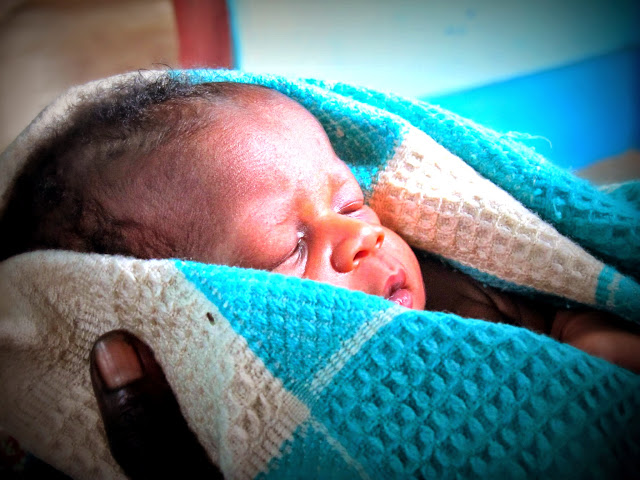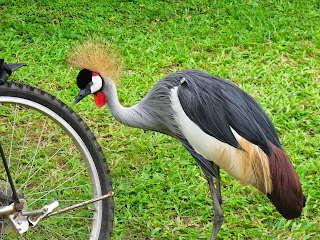 My BD was yesterday and unless you *truly* remembered or are
getting the emails I’m sending outside of this blog, you wouldn’t have known. I
avoid having it be a part of the massive on-slaught of FB posts from people who
otherwise wouldn’t care …. So, thank you to the few true friends and family who
sent messages. In remote Africa, they mean
more than I can ever adequately explain. Truly.
My BD was yesterday and unless you *truly* remembered or are
getting the emails I’m sending outside of this blog, you wouldn’t have known. I
avoid having it be a part of the massive on-slaught of FB posts from people who
otherwise wouldn’t care …. So, thank you to the few true friends and family who
sent messages. In remote Africa, they mean
more than I can ever adequately explain. Truly.
So, I am officially 35 now. Even I can’t believe it myself, probably
more so than my parent’s disbelief because simultaneously my birthday ages them
another year. We’re all growing up, I suppose. 35 full years! Time is going so fast! And it feels really good and nice and all the things that I
guess “aging gracefully” encompasses. Plus, no wrinkles! Double bonus.
This year I am thankful that I am finished with school (for
now!) and in a place that I truly love, doing work that I feel is so much a
natural outpouring of me. It fits me well in so many ways - all the grit, dirt,
grime and energy it takes being here included. I often daydream of what a life
here would look and feel like full time, knowing deep down that this isn’t the
end for me here….maybe not necessarily here in Uganda, but here in Africa
somehow. Of this, I’m pretty sure.
Predictably, I feel more at home here than
even at home in Mississippi - or the USA. I reflect
and am shocked how long I can exist there in an imposed ‘coast’ mode,
obviously in the wrong place. After 2 years of Graduate school, taking Boards
and immediately hopping the first plane, this truth is very evident to me now
that I am away. This might not make sense, or even be offensive to some, but in
deep, meaningful, yet subtle ways I know it
is true. What this might mean for my future, I’m not entirely sure, I just know
that I am 35 now and not getting any younger.
All this narcissistic hogwash to say, I am really glad my BD was
spent here … despite it being radically different than any other … it was one
I’ll never forget. In a quick nutshell, all I asked everyone for was eggs and
one chapati for my BD breakfast. This is basically a fried doughy bread that I
fill with eggs. They call them a Rolex here (Yes, like the watch). We have them
periodically but it is a lot of work to make the dough, roll them out and then
individually fry each…but they are SO good...and pretty much the extent of BD presents to receive in these parts. This, and coffee with
fresh milk from the guy who comes each morning to sell us fresh raw milk from
his nearby farm. Simple request, no? I even pilfered the last two eggs to
assure this one birthday wish.
In typical African style … none of it took place. And, in
fact, we ran out of food. For 2 days, we were skimping on the basics and
desperately needed a trip into town for food. But, ...in also typical African style ... our car broke down a few with a broken engine block days before that so we are stuck with very little transport and a dwindling
supply of rice and beans…. Ahh…the realities in remote Africa.
 Fortunately, a very sweet student here used some rationed
millet flour to make her best biscuit attempt and brought them to me as a replacement breakfast. It was very kind. Later on, another midwife was packing to leave and
discovered ½ a Snickers bar in her bag which we then cut into a small piece for
everyone. This 1/8 of a candy bar dubbed as my cake alongside a candle that she
melted from pieces of leftover wax and made for me to blow out.
Fortunately, a very sweet student here used some rationed
millet flour to make her best biscuit attempt and brought them to me as a replacement breakfast. It was very kind. Later on, another midwife was packing to leave and
discovered ½ a Snickers bar in her bag which we then cut into a small piece for
everyone. This 1/8 of a candy bar dubbed as my cake alongside a candle that she
melted from pieces of leftover wax and made for me to blow out.
The Birth
Center was oddly slow, so
I painted and sewed, played backgammon and got into great conversations about
world religions and its effect on modern society. It was a perfect day of
drinking tea and relaxing. They sung Happy BD in 3 different languages and the
day ended with a group movie.
It truly was all that I needed to turn to my 35th
chapter of life. Thank you again
to all those who remembered and contacted me – such special people you are.
 Our second day started off with an added-on Chimpanzee Trek.
This, I highly recommend! Anyone with the opportunity to silently watch
chimpanzees in the wild, must-must-must take the opportunity. With 98% similarity between our DNA and theirs (Yes! This is true), chimpanzees are the closest living relative to humans. It is an understatement
to say how uncanny it was to observe so many human mannerisms. I was able to
see breastfeeding, hand grips, lip smacking, scratching bellies, combing each
others hair, folding arms behind head to rest … so very entertaining!
Our second day started off with an added-on Chimpanzee Trek.
This, I highly recommend! Anyone with the opportunity to silently watch
chimpanzees in the wild, must-must-must take the opportunity. With 98% similarity between our DNA and theirs (Yes! This is true), chimpanzees are the closest living relative to humans. It is an understatement
to say how uncanny it was to observe so many human mannerisms. I was able to
see breastfeeding, hand grips, lip smacking, scratching bellies, combing each
others hair, folding arms behind head to rest … so very entertaining! 
 A large area of wildlife called the Burongo Forrest that is
directly south and attached to
A large area of wildlife called the Burongo Forrest that is
directly south and attached to  Jane Goodall has been to
this same forest doing her research, which is a pretty cool thing we now have
in common. Did you know she can ‘speak’ chimpanzee?
Jane Goodall has been to
this same forest doing her research, which is a pretty cool thing we now have
in common. Did you know she can ‘speak’ chimpanzee?
































